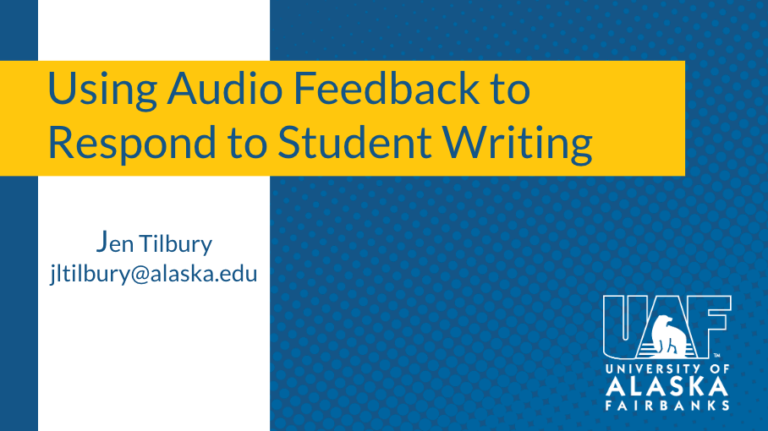
Use student conferences to develop positive rapport
At this point in the semester, you know your students’ names and have a sense of who is struggling and who wants more of your time than you can give. But have you seen a draft of their midterm project? Have you connected individually with all your students — not just the outstanding ones? Now is a great time to schedule student conferences — short, one-to-one or small group meetings that allow you to initiate open dialogue and share and receive customized feedback with all the students in your course.
Research shows that the relationships between students and their instructors in a university-level course is “one of the most important factors” contributing to student success, with impacts on both learning outcomes and student engagement (Lammers & Gillaspy, 2013). Researchers suggest many strategies for developing positive rapport with your students, including being clear and generous about your availability, showing that you care and support students, and communicating individually with students a few times in the semester (Lammers & Gillaspy, 2013). Student conferences check all of the boxes and have the additional benefit of letting teachers integrate feedback and adjust their approaches to better suit their students: “These face-to-face meetings not only give students a chance to develop their works-in-progress and to make connections with TAs or professors, but they also offer TAs and professors, in turn, a chance to really get to know their students and refine their pedagogical practices” (Gold, 2018, para. 2).
While the benefits are clear, the undeniable problem of student conferences is time. There’s no way around the time involved — in fact, giving students some of your time is part of showing you care and building the relationship. But there are strategies to reduce the time burden on you:
- Limit conference length to 10-20 minutes
- Cancel a synchronous class meeting (or two) to save time on lesson planning and delivery
- Use the conference to give students verbal feedback on an assignment and save time writing it out
- Instead of one-to-one conferences, meet with students in pairs — each gets individual attention and the benefit of connecting with a peer
- Use Google Calendar’s “appointment slots” feature to make scheduling conferences as efficient as possible
- Give yourself the gift of an uninterrupted work-from-home day by using Zoom for your conferences
To make sure you and your students get the most out of these conferences, it’s important to give these meetings a clear focus and to communicate your goals for the meeting with your students. It’s not enough to say that you just want to give and/or get feedback about the class but it’s likely too much to go line by line through a paper. Choose a discrete focus for the meeting, i.e. you’d like to discuss their project proposal or share feedback on their last blog post. Connecting the meeting to an assignment is an easy way to lend focus and structure.
It’s equally important to sit back during these meetings and give students a chance to lead while you listen. Showing that you can both listen and respond to student concerns contributes to positive rapport and gives you a chance to integrate feedback into your teaching beyond the conferences. Ask students to come with one or two points of their own about the conference’s focus and then open the meeting by asking them to share their ideas or questions first. This approach puts you in the position of listening and honoring the students’ ideas; it also helps you focus your feedback as a response to their concerns (Gold, 2018). Throughout the conference, embrace silence as time to think — it’s hard for any of us to be put on the spot, especially by an authority figure.
Finally, as students become comfortable, leave time to ask for direct feedback: “How is the class going for you? What would you like more or less of? Is there anything that isn’t making sense to you? What other questions or concerns do you have?”. You may or may not be surprised by what you learn, but you will learn as much from your students as they do from you. And just as their learning outcomes and motivation improve as your relationships grow, you’re likely to find yourself more engaged in your teaching and encouraged by the connections you’re able to make.
References
Gold, A. (2018). “Cracking the Student Conference.” Inside Higher Ed.
Lammers, W. and Gillaspy, J. A. Jr. (2013) “Brief Measure of Student-Instructor Rapport Predicts Student Success in Online Courses.” International Journal for the Scholarship of Teaching and Learning, 7(2).

Kendell Newman Sadiik
Associate Director of Transformative Teaching
Instructional Designer
LION Liaison



